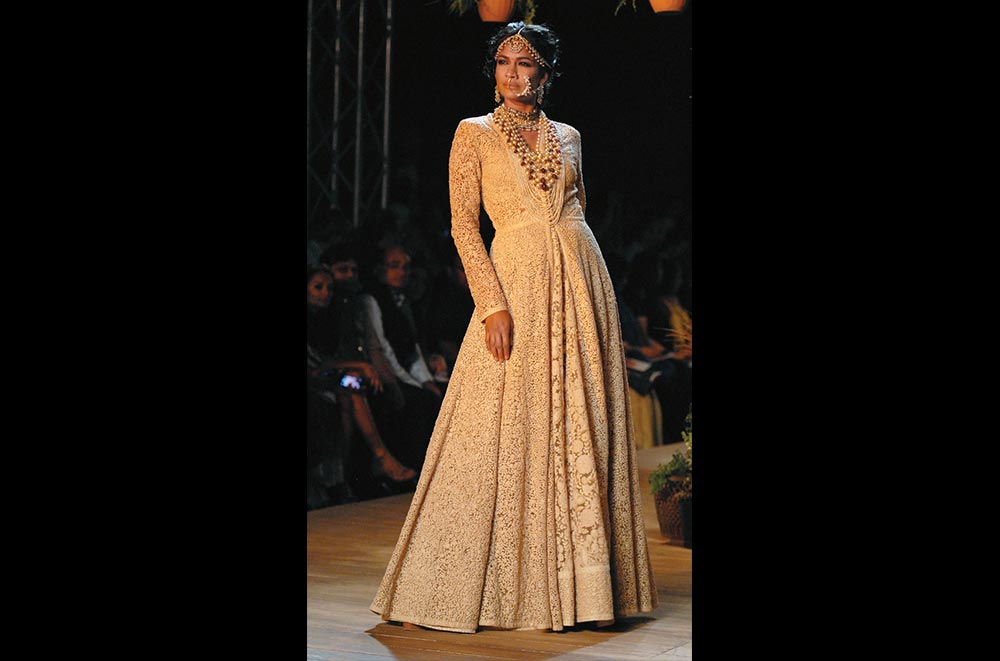This season, I met up with friends from the fashion world after a gap of some years to see the kind of work they’re doing in bridalwear and couture (the two are mostly interchangeable in India) to find that not all that much has changed. Heavy embroidery still gets major play with all of them, and depending on your taste it can range from the gasp-out-loud in its dazzling sumptuousness to the outright vulgar. The cuts are cleaner, the karigars they employ along with the range of technology and materials available to them means that the quality is much better than in previous decades or even centuries, and, combined with the kind of detailing customers are demanding, they are creating museum-quality heirlooms.
That’s the good part. The bad part — and I’m no expert — is that they seem to have been trapped in the whole jiggery-pokery of Western silhouettes. For years, Western designers told us what Indian fashion lacked was silhouette, which is all right if you’re speaking about office fashion (which is never couture anyway), or even red carpet appearances, when you appear for a photo-op before getting out of something you can’t sit down in.
That’s precisely what’s happened to our bridal couture. The lehnga (or skirt) has become so stiff over time because of the intricacy of heavy detailing and the designer decree of a silhouette that it might as well be made out of cardboard — or even Teflon. It’s so stiff that brides, already weighed down by kilos of jewellery, no longer find it comfortable to even walk in them. I admired JJ Valaya’s exquisite eye for design and embroidery, but had to wonder which bride would be able to sit down in such a lehnga. Or Suneet Varma’s lehngas, for instance, where the swish seemed to have gone out of the skirt, to be replaced entirely by structure.
Rohit Bal always manages to bridge that distinction brilliantly and uses fabrics intelligently to create clothes that have a life beyond just one couture outing, for which reason I believe he’s India’s one true master. Anamika Khanna is excellent. Manish Arora is, well, maverick. But if there’s a couture designer I admire, it has to be Sabyasachi. And that’s not just because he’s remained the darling of the glitterati over the past few seasons. Do I like all his embroideries and weaves and glittery stuff together in a single garment? I’d have to say the jury’s out on that one. What I most definitely do not like is the use of new materials such as net that end up looking like sequined mosquito nets. Surely chiffons and georgettes are way better, and certainly drape nicer.
But who am I to argue when, in fact, the reason why I applaud Sabyasachi is his mastery over drapes. There is no tension in his finished garments — whether lehngas or sarees. His couture wear has flounce and flow. Not only can you walk comfortably in his clothes, you can lounge around in them, perching on a sofa or settling down on the floor. Isn’t that what weddings are — occasions to have fun without wondering if the fitted corset is going to suffocate you?
And, oh yes, he’s classy enough to create a range that has gown-like styles, perfect for friends and guests who don’t want to compete with the bride. The kind of clothes you can repeat (the equivalent of social hara-kiri, I know) at a Diwali party or office outing without looking out of place. You’ve got to appreciate him for that.
—The author is a Delhi-based writer and curator











